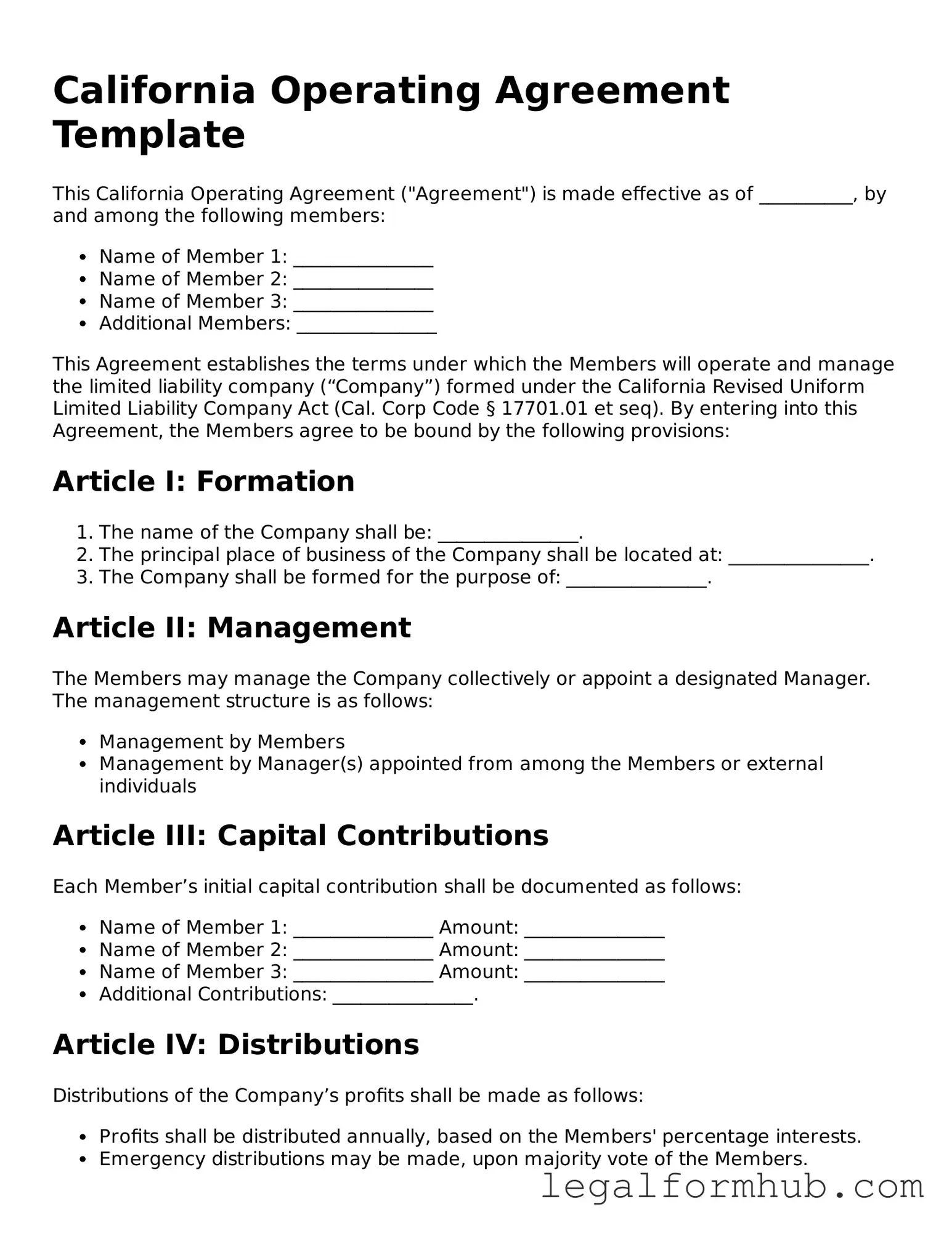The California Operating Agreement is similar to a Partnership Agreement. Both documents outline the terms and conditions under which a business operates. They define the roles and responsibilities of each partner, the distribution of profits and losses, and the procedures for resolving disputes. While a Partnership Agreement is typically used for partnerships, the Operating Agreement serves a similar purpose for LLCs, ensuring all members are on the same page regarding business operations.
Another comparable document is the Corporate Bylaws. Like the Operating Agreement, Corporate Bylaws govern the internal management of a business entity. They specify the roles of officers, the process for holding meetings, and voting procedures. While Bylaws are specific to corporations, both documents aim to provide a clear framework for decision-making and governance within the organization.
The Shareholder Agreement is also similar to the Operating Agreement. This document outlines the rights and obligations of shareholders in a corporation. It covers aspects such as share transfers, voting rights, and the process for resolving disputes. Both agreements serve to protect the interests of the members or shareholders and ensure smooth business operations.
A Joint Venture Agreement shares similarities with the Operating Agreement as well. This document is used when two or more parties come together for a specific project or business venture. It outlines each party's contributions, responsibilities, and profit-sharing arrangements. Like the Operating Agreement, it establishes a clear framework for collaboration and decision-making.
The Limited Partnership Agreement is another document that parallels the Operating Agreement. This agreement outlines the relationship between general partners and limited partners in a limited partnership. It details the roles, contributions, and profit distribution for each partner. Both agreements aim to clarify the structure of the business and the expectations of each party involved.
The Non-Disclosure Agreement (NDA) can also be seen as similar in purpose to the Operating Agreement, though it serves a different function. An NDA protects confidential information shared between parties. While the Operating Agreement focuses on the operational aspects of a business, both documents are essential for maintaining trust and ensuring that sensitive information is handled appropriately.
The Employment Agreement bears resemblance to the Operating Agreement in that it outlines the terms of employment for individuals within a company. This document details job responsibilities, compensation, and termination procedures. Both agreements establish clear expectations and help prevent misunderstandings in the workplace.
For those interested in liability protection, the essential Hold Harmless Agreement form serves as a vital resource, ensuring that one party does not hold another accountable for potential risks associated with various activities.
Lastly, the Membership Certificate can be compared to the Operating Agreement. This document serves as proof of ownership in an LLC and may accompany the Operating Agreement. While the Operating Agreement governs the management and operations of the LLC, the Membership Certificate signifies each member's stake in the business, reinforcing the importance of both documents in the structure of an LLC.
